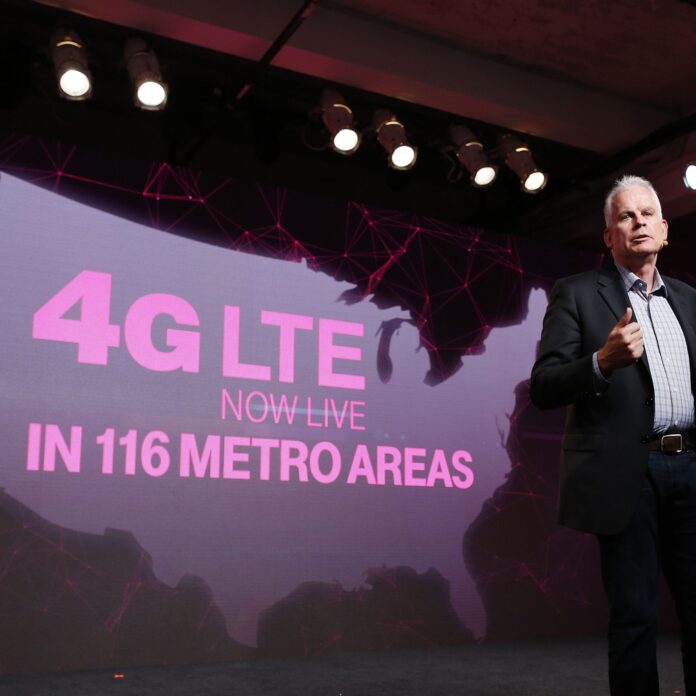T-Mobile US says the Federal Communications Commission needs to stand by its recent comments on carrier competition by revisiting its rules for the 600 MHz spectrum auction.
T-Mobile US challenges FCC 600 MHz auction rules
Less than a week after asking the FCC to approve its purchase of more 700 MHz spectrum, T-Mobile US is asking the agency to reconsider the rules for its upcoming auction of more low-band spectrum. This auction, currently scheduled for the middle of next year, will enable wireless carriers to bid on spectrum that is to be released by TV broadcasters.
T-Mobile US wants the FCC to reserve more low-band spectrum for non-nationwide carriers and those that do not already have at least 45 megahertz of low-band holdings in a particular partial economic area. The FCC’s current proposed reserve amounts are explained in the chart below, in which the initial clearing target refers to the amount of spectrum released by broadcasters.

“The current reserve framework gives too much to the two dominant carriers at the expense of competition,” said T-Mobile US in its FCC filing. The carrier goes on to say that the landscape has changed since it first approached the FCC on this issue. For one thing, FCC Chairman Tom Wheeler has now “articulated the importance of having four nationwide carriers given the current market structure,” according to T-Mobile US. Furthermore, the FCC has decided not to let carriers team up to bid for spectrum in this auction.
T-Mobile US says the current plan “fails to provide enough of a reserve to maintain the four nationwide-carrier structure of the current market.” The carrier goes on to note that 20 megahertz blocks are the “foundation of an economical low-band deployment,” and includes in its filing quotes from both Verizon Wireless and AT&T saying that 10×10 megahertz allocations are best for LTE deployments. Clearly, the current reserve structure could leave “orphan” 10 megahertz blocks which might be seen as less valuable by bidders.
“The market-based reserve saves a maximum of 30 megahertz of spectrum in each license area for competitive carriers,” T-Mobile US wrote in its filing. “This amount steadily decreases at lower levels of spectrum clearing. The result is that at most only one reserve-eligible carrier can acquire 20 megahertz of spectrum without facing the risk of foreclosure by the two dominant providers.”
T-Mobile US also takes on the issue of the unreserved spectrum, asserting that the current structure increases the likelihood that Verizon Wireless and AT&T will create a duopoly.
“Designating as unreserved spectrum 40 megahertz of spectrum among four license blocks permits Verizon and AT&T to divide the available unreserved spectrum evenly between them at 20 megahertz each,” T-Mobile US stated. “This even split permits Verizon and AT&T to avoid directly competing against one another.”
Low-band spectrum is well-suited for in-building coverage and for providing coverage over large areas. T-Mobile US has recently purchased a block of low-band spectrum from Verizon Wireless in exchange for higher-band spectrum.
Follow me on Twitter.

